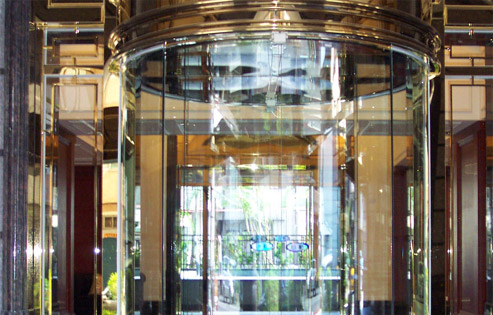-------------------------------------------------------------------------------
Sliding Automatic Doors (Puerta automática corrediza)
A significant milestone in the development of automatic doors was the introduction of sliding automatic doors. These doors, often referred to as "Puerta automática corrediza" in Spanish, have become a common sight in modern buildings. They offer several advantages, including:
☞ Space Efficiency: Sliding doors require less space to operate compared to swinging doors.
☞ Accessibility: They are easier for people with disabilities or those carrying large items to use.
☞ Convenience: Sliding doors automatically open and close, eliminating the need for manual effort.
☞ Safety: They are equipped with sensors to prevent accidents and injuries.
The history of automatic doors(Puerta automática corrediza) dates back to ancient times, with modern advancements shaping their current widespread use in various settings like commercial buildings, hospitals, and transportation hubs. Here’s a brief overview of the evolution of automatic doors(Puerta automática corrediza):
Ancient Innovations
1st Century AD (Heron of Alexandria): The concept of automatic doors(Puerta automática corrediza) can be traced to Heron of Alexandria, a Greek engineer who designed a steam-powered temple door. His invention used heat from fire to move water into a vessel, which created air pressure to open the doors—essentially one of the first known examples of automation.
Early 20th Century Developments
1930s: The first modern automatic door(Puerta automática corrediza) was developed by engineers in the 1930s. One significant design was by Dee Horton and Lew Hewitt in the U.S., who created the first practical sliding automatic door(Puerta automática corrediza). Their invention was inspired by the need for a door that could handle heavy foot traffic in commercial spaces.
Commercial Breakthrough
1954 (Stanley Works): The first commercially successful automatic sliding door system was created by Stanley Works. They developed an electromagnetic system that opened doors when a person approached.
1960s and 1970s Innovations
Infrared Sensors (1960s): Automatic door(Puerta automática corrediza) technology saw further advancements with the development of infrared sensors, which could detect when someone approached the door. These sensors became more reliable and practical for widespread use in supermarkets, hotels, and airports.
1962 (Horton Automatics): Dee Horton and Lew Hewitt founded Horton Automatics and produced the first sliding automatic doors(Puerta automática corrediza) for public use, popularizing their installation in hospitals and large buildings.
Modern Advancements
21st Century: Today, automatic doors(Puerta automática corrediza) are equipped with various sensor technologies, including motion detectors, pressure sensors, and radio waves. They are designed with energy efficiency in mind and can be controlled remotely or integrated with security systems. Sustainability, accessibility, and aesthetic designs are current focuses in the industry, with newer designs emphasizing hands-free access, particularly in response to health concerns such as the COVID-19 pandemic.
The development of automatic doors(Puerta automática corrediza), including sliding automatic doors(Puerta automática corrediza), has dramatically improved convenience, safety, and accessibility for millions of people worldwide.




